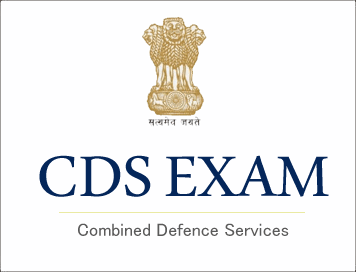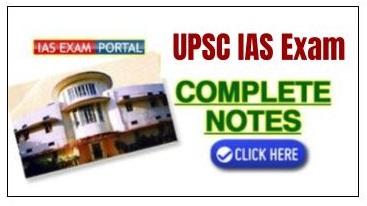
West Bengal Public Service
Commission
Syllabus: Assistant Engineer (Civil) Recruitment Examination - 2011
Assistant Engineer (Civil) Recruitment Examination, 2011 Scheme and
Syllabus:
The Examination shall be held in two successive stages viz.
- Written Examination
- Interview.
Final merit list will be prepared on the basis of total marks obtained by the
candidates in the written examination and interview. The Commission shall have
the discretion to fix qualifying marks in the written examination, interview as
also in the aggregate.
Syllabus For The Written Examination:
The course content of the syllabus for the paper will be of the degree level.
The syllabus is given below with distribution of marks as indicated against the
respective subject module.
Theory and Design of Structures:
Theory of structures and strength of materials :
-
Solid Mechanics – properties of material, Mohr’s circle
of stress-strain, plain stress & strain, combined stress, Elastic theories
of failure, simple bending, shear, torsion of circular and rectangular
sections, columns and struts, moving loads and influence lines for shear
force and bending moment for-simple and continuous beams and frames.
-
Structural Analysis – Analysis of determinate structures.
Different methods of analysis of indeterminate structures – moment
distribution, slope-deflection, column analogy, strain energy method, three
moment theorem, Muller Breslau Principle and application, etc. Analysis of
determinate and indeterminate arches.
Steel Design – (Design of Steel Structures) :
-
Principle of working stress method, Design of all types
of connection, Simple members, Built up sections and frames, Design of
Industrial structures and Multistoried frames, Design of steel bridges and
tanks of different types, Design of tubular structures, codal provisions for
design of all those steel structures including foundation.
-
Principle of ultimate load design; Plastic design of
continuous frames and portals.
Design of Reinforced Concrete and Masonry Structures:
Limit state method of design. Codal provisions for design. Working stress
method of design. Concrete mix design & Quality control, Principles of
prestressed concrete design, materials, methods of prestressing, losses in
prestressing, anchorages. Design of Brick masonry as per I.S. codes.
Fluid Mechanics and Hydraulics:
Fluid properties and definitions, Flow kinematics, continuity momentum and
energy equations applicable to fluid flow, Bernoulli’s theorem, flow through
conduits, flow through open channels, Hydraulic jump, flow through pipes and
losses in pipe flows, siphons, pipe network, forces in pipe ends, hydraulic
energy grade line, water hammer. Viscosity, definition of ideal fluid
Soil Mechanics and Foundation Engineering:
-
Properties of soils, classifications and
interrelationship; definitions of terms used; soil testing in laboratory and
in-situ; compaction behaviour, methods of compaction and their choice;
permeability and seepage, flow nets, flow under hydraulic structure, uplift
and quicksand condition inverted filters, unconfined and direct shear
stress, tri-axial test, shearing resistance, Earth pressure theories,
stability of slopes; compressibility and consolidation. Theories of
consolidation, pressure distribution in soils, soil stabilization, soil
exploration and penetration tests, Pore water pressure.
-
Types of foundation, selection criteria, bearing
capacity, settlement, laboratory and field tests, codal provisions in all
types of foundation including testing of piles etc. Types of piles and their
design and layout; Foundations on expansive soils, swelling and its
prevention, Design of retaining walls, wells, sheet piles and
caissons, Reinforced earth technique and its use.
Surveying:
Classification of surveys, scales, accuracy; Measurement of
distances-by direct and indirect methods, optical and electronic devices,
Measurement of directions, Prismatic compass, local attractions; Theodolities-types,
Measurement of elevations, trigonometric leveling, contours, Establishment of
control by triangulations and traversing. Measurements and adjustment of
observation, Computation of coordinates; Errors and their corrections of
measurement of length, bearing horizontal and vertical angles and leveling
operation, Correction due to refraction and curvatures, Map preparation by plane
tabling and photogrammetry; Field astronomy, concept of global positioning
system; Remote sensing concepts, map substitutes; Setting out directions and
grades; types of curves, setting out of curves and excavation lines for building
foundation.
Construction Materials, Practices, Planning and Management:
- Building Materials specifications, tests, uses and codal provisions.
-
Concrete technology – Cement its properties,
classification and specification – Provisions in I.S. code. Properties of
coarse and fine aggregates – Provisions in I.S. code, concrete mix design,
Laboratory concrete, Ready mixed concrete, field tests for quality control
of concrete, concreting equipments.
- Earth moving machineries and pile driving equipments.
-
Construction planning and management – Bar chart, linked
bar chart, work break down structures, Activity-on-arrow diagrams, critical
path, probabilistic activity durations, Eventbased network, PERT Network,
Time Cost study, crashing, Resource allocation, Rescheduling of construction
programme.





